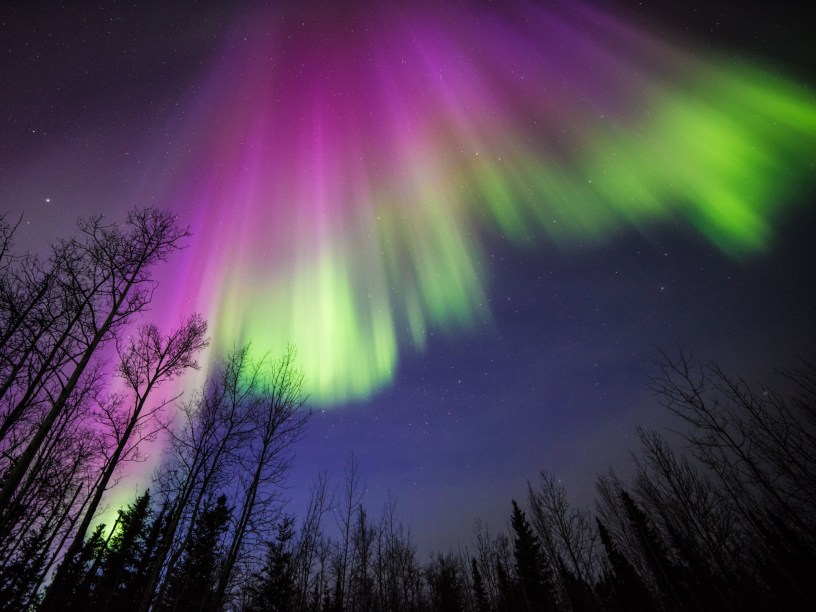If you are near the North or South Pole, you may be in for a very unique and striking light show in the sky. These lights are called auroras. If you are near the North Pole, it is called an Aurora Borealis (Northern lights) and if you are near the South Pole, it is called an Aurora Australis or the (Southern lights). They offer an alluring, dramatic, magical display that mesmerizes all who see it.
For millennia, the lights have been the source of conjecture, superstition and admiration.
Even though auroras are best seen at night, they are in fact caused by the sun. The sun’s magnetic fields alter as it rotates on its axis. When these fields become knotted together, they create sunspots which usually occur in pairs. At the center of the sun, the temperature is about 15 million degrees Celsius. As the temperature on its surface fluctuates, particles escape from the star from the sunspot regions on the surface, hurtling particles of plasma, known as solar wind, into space. It takes these winds around 40 hours to reach Earth. When they do, they are drawn beguilingly toward the Magnetic North and South Poles. As the particles pass through the Earth’s magnetic shield, they interact with atoms and molecules of oxygen, nitrogen and other elements that result in the dazzling display of lights in the sky known as the auroras.
Auroras occur not only on Earth, but also on other planets in our solar system. The sunspots and solar storms that cause the most magnificent displays of the northern lights occur roughly every 11 years.
The colors most often associated with the Aurora Borealis are pink, green, yellow, blue, violet, and seldom orange and white. The type of collision and altitude makes a divergence to the colors that appear in the sky. These lights may manifest as a static band of light, or as a dancing curtain of ever-changing color.
The Aurora Australis, occur around the south polar region. Since the South Pole is even more inhospitable than the North Pole, it is often trickier to view them.
The best places to see the northern lights are Alaska and northern Canada. Norway, Sweden and Finland also offer excellent vantage points. During periods of particularly active solar flares, the lights can be seen as far south as the top of Scotland and even northern England.
When to see the lights?
The northern lights are always present, but winter is usually the best time to see them, due to lower levels of light pollution and the clear, crisp air. September, October, March and April are some of the best months to view the Aurora Borealis. The lights are known to be brighter and more active for up to two days after sunspot activity is at its highest. Several agencies, such as NASA and the National Oceanic and Atmospheric Administration, also monitor solar activity and issue aurora alerts when they are expected to put on a particularly impressive show.
References:
https://www.space.com/
https://spaceplace.nasa.gov/
https://www.nationalgeographic.com/
Image Credits: https://www.nasa.gov/sites/default/files/styles/full_width_feature/public/thumbnails/image/20150409-10-sebastiansaarloos.jpg

